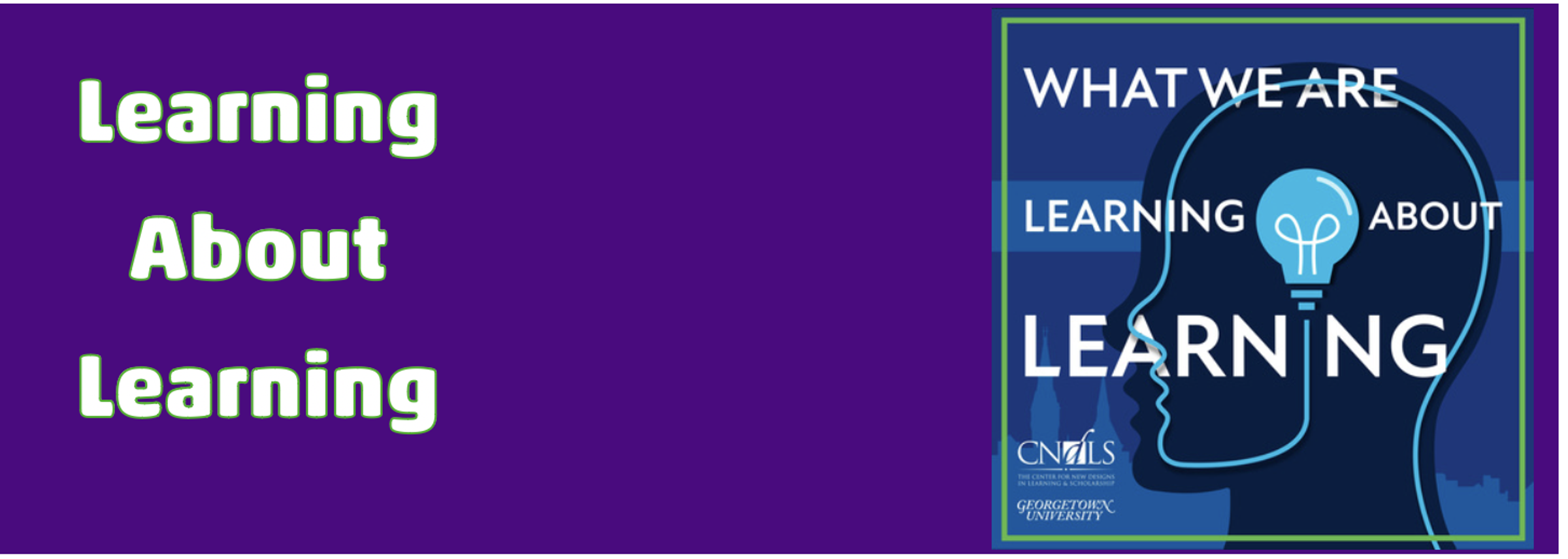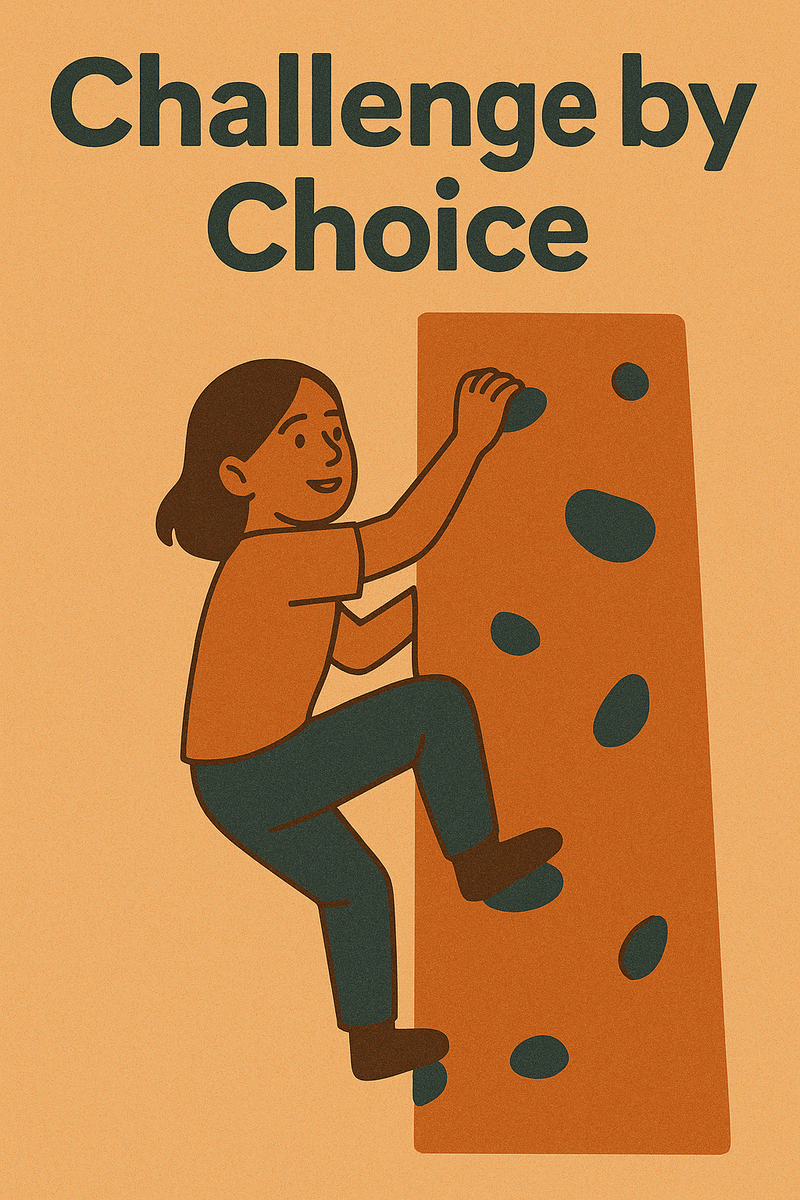Learning About Learning:

Number 3 in a Series: Building Learner Resilience
Challenge by Choice
Empowering learners to grow through courageous self-directed challenge
Growth and resilience are often thought of as outcomes of hardship, but that doesn't mean learners should be pushed into the deep end unprepared. One of the most powerful ways to build resilience in children is by offering them “challenge by choice”: the opportunity to step outside their comfort zone in a way that respects their readiness and honours their autonomy.
“Challenge by choice” isn’t a new concept. It comes from adventure-based learning and experiential education, where participants are invited—but never forced—to try something new, such as climbing a rock wall or leading a group task. The goal is not to eliminate fear, but to allow learners to manage it in a supportive environment—and, most importantly, to choose to take that step themselves.
Why choice matters in resilience
When students choose to engage with a challenge, rather than being pushed, their experience changes entirely. What might have felt like pressure now becomes an act of courage. Ownership, motivation, and pride all increase.
Educational researcher Lev Vygotsky described the “Zone of Proximal Development” (ZPD) as the sweet spot where learning occurs—between what a child can do independently and what they can accomplish with guidance. Challenge by choice aligns beautifully with this. It allows learners to operate within their ZPD, choosing when and how to venture into unfamiliar territory with support readily available.
Psychologist Dr. Martin Seligman, founder of positive psychology, has shown that when people feel they have control over their actions, even within constraints, they are more likely to develop perseverance, optimism, and intrinsic motivation. All of these are foundational to resilience.
“The belief that one has the power to change a situation is the backbone of resilience,” writes Seligman.
Building a culture where challenge feels safe
For “challenge by choice” to work well in schools, learners need to know that taking a risk won’t be met with ridicule, judgment, or shame. They need to feel safe, emotionally and socially. That means we must build environments where:
- Mistakes are viewed as an integral part of the learning process.
- All efforts, not just outcomes, are celebrated.
- Bravery is valued over perfection.
Children who know that their efforts will be met with encouragement are far more likely to step up voluntarily. In this way, resilience grows not from being forced into hard things, but from being invited and supported to try them.
Practical examples of challenge by choice
Here are some ways we can apply this principle across different settings:
In the classroom:
- Invite students to share their work publicly—but allow them to choose when and how.
- Offer differentiated tasks with increasing levels of complexity.
- Encourage students to set their own learning goals—and help them track their progress.
In the playground or outdoors:
- Offer physical activities involving perceived risk (like climbing, jumping, balancing), while allowing children to assess their comfort level.
- Encourage group problem-solving games where roles vary and participation is self-directed.
At home:
- Let children decide when they’re ready to try something new (e.g., ordering food, talking to a coach, trying a new hobby).
- Model your own growth mindset: “This is new for me, but I’m going to give it a go.”
Giving children autonomy over their challenges increases their sense of agency, a critical aspect of long-term resilience.
The courage to choose
It’s easy to assume that resilience is built by confronting massive adversity. But in reality, resilience is often built in smaller, everyday moments—such as choosing to speak up in class, trying a difficult math problem again, or asking to join a game at break time.
These small acts of bravery compound over time. They send an internal message to the learner: “I can handle this. I can grow. I can choose to stretch myself.”
As educational leader, Dr. Julia Atkin puts it:
“When we allow children to make choices within a framework of trust and support, we’re fostering both independence and interdependence—key ingredients of lifelong learning.”
Final Thought
At Western Heights School, we don’t want learners to be compliant passengers on the education journey. We want them to be drivers—curious, courageous, and in control of their learning path.
“Challenge by choice” is more than an approach—it’s a philosophy.
It says:
We trust you. We’ll walk alongside you. But ultimately, the choice to grow is yours.
And in that choice lies the seed of resilience.

